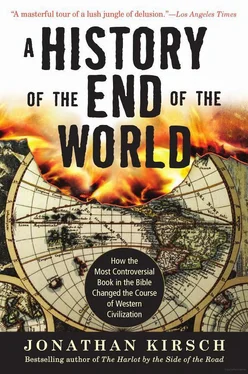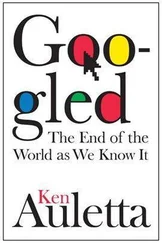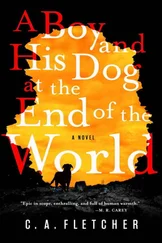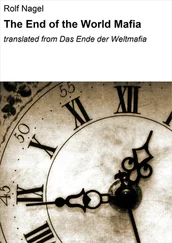“Christianity is primarily concerned with this world,” explained one theologian, “and it is the mission of Christianity to bring to pass here a kingdom of righ teous ness and to rescue from the evil one and redeem all our social relations.” 34
Even those who still believed that the end is near began to subtly repurpose the text of Revelation in ways that meshed with sturdy and vigorous American values of Yankee ingenuity, material comfort, and personal self-improvement. Samuel Hopkins, the abolitionist pastor of a Congregational church in Rhode Island in the late eighteenth century, imagined the millennial kingdom as a place where “all utensils, clothing, buildings &c will be formed and made in a better manner and with much less labor,” thanks to improvements in “all useful branches of the arts and sciences that promote spiritual and bodily comforts in this life.” Only two or three hours of work each day will be required to earn a livelihood, he predicted, and leisure hours will be spent in “reading and conversation,” all of which would be conducted in a universal language that all of humankind will speak. All of these prophecies, Hopkins promised, would be fulfilled in not more than a couple of centuries. 35
By the 1850s, the dividing line between faith in God and faith in progress was even murkier. A Methodist women’s magazine, for example, praised the invention of the telegraph as “the means of extending civilization, republicanism and Christianity over the earth,” which amounted to a new and thoroughly modern definition of the kingdom of Christ on earth: “Then shall come to pass the millennium.” 36And the westward expansion of the United States—an enterprise that has been likened to a war of genocide against the people who were already here when the Puritans showed up—was seen as nothing less than a divine mandate.
“We are entering on its untrodden space, with the truths of God in our minds, beneficent objects in our hearts, and with a clear conscience unsullied by the past,” writes John O’Sullivan in the 1839 article that inserted the doctrine of “Manifest Destiny” into the American political vocabulary. “In its magnificent domain of space and time, the nation of many nations is destined to manifest to mankind the excellence of divine principles; to establish on earth the noblest temple ever dedicated to the worship of the Most High—the Sacred and the True.” 37
A fault line runs between these two ways of understanding of the apocalyptic idea, one embraced by revivalists and the other embraced by reformers. On one side are the true believers who lift their eyes heavenward and search the skies for a sign of the Second Coming. On the other side are the more practical believers who hunker down to the task of building the millennial kingdom with their own hands right here on earth. A great many earnest men and women, of course, were capable of straddling the line and trying to do both at once. But, as we shall see, the landscape of American democracy would be shaken again and again by the tremors that result when these two tectonic plates collide.
The apocalyptic idea, as we have seen, is supposedly linked to oppression and persecution. The victims, we are told, console themselves with visions of revenge like the ones that are described so rousingly in the pages of Revelation. The fact is, however, that the text is capable of stirring up the passions of ordinary men and women who suffer from nothing more than overactive imaginations. Even in the New World, for example, and even in an era of peace and prosperity, the prospect of the second coming of Jesus Christ and the end of the world was a thrilling notion to otherwise comfortable and complacent Americans like an upstate New York farmer whose name was William Miller (1782–1849).
Miller was a Baptist from the Burned-Over District, wholly untutored in Bible scholarship and backsliding in the direction of deism. While serving as an officer in the War of 1812, however, he experienced a battlefield conversion, and when he returned to civilian life on the family farm, he devoted himself to the study of the Bible. His eye fell on a passage in the book of Daniel where the prophet is told in one of his visions that twenty-three hundred days shall pass, and “then the sanctuary shall be cleansed.” 38Like the author of Revelation and countless other biblical finger-counters, Miller was convinced that he had stumbled across a line of scripture that contained a coded reference to the end of the world, and he spent the next two years trying to crack the code.
Miller figured that the biblical reference to twenty-three hundred days actually means twenty-three hundred years —of course!—and he fixed the starting point for the countdown clock in 457 B.C.E., which he calculated as the year when the exiled Jews commenced the rebuilding of the Temple of Yahweh in Jerusalem. The “sanctuary,” he decided, was a code word for the world. Then, simply by doing the math, he calculated that the second coming of Jesus Christ and the beginning of the end of the world would take place “sometime around 1843.” 39
“I believe,” wrote Miller, “that the Scriptures do reveal unto us in plain language that Jesus Christ will appear again on this earth, that he will come in the glory of God, in the clouds of heaven, with all his Saints and angels.” 40
Miller “did not rant or rave,” preferring to patiently explain his approach to the scriptures “in a low-keyed schoolmasterish fashion.” 41At first, he confided only in his friends and neighbors. By the 1830s, however, Father Miller, as he had come to be called, was attracting the attention of evangelical ministers and their small-town congregations around New England. Among his followers were some capable and imaginative men who understood how to put a message across to a mass audience, and they resolved to let the rest of America know what awaited them in the very near future.
Like the revivalists of the Great Awakening, the leaders of the so-called Millerites organized tent meetings that attracted earnest seekers by the thousands. And, like the televangelists of our own era, they made good use of the latest information technology of the mid–nineteenth century, the high-speed printing press, to produce the elaborately illustrated publications, tracts, and broadsheets—including periodicals titled Midnight Cry and Signs of the Times— that explained Miller’s complex theories of biblical prophecy in simple and colorful terms.
Some of Miller’s hard-charging handlers encouraged him to commit himself to a more specific prediction than “sometime around 1843.” By redoing his calculations according to what he called “ancient Jewish reckoning,” Miller came up with a somewhat narrower prophecy: Jesus Christ would return sometime between March 21, 1843, and March 21, 1844. When the new deadline passed without any sign of the Second Coming, one of his enterprising followers claimed to have found a calculational error and fixed D-day for October 22, 1844. And then, at last, Father Miller and his followers put down their pencils and waited for the day that would surely bring the fulfillment of the ancient prophecies of Revelation about the second coming of Jesus Christ.
“If he does not come within 20 or 25 days,” Miller announced at the beginning of October 1844, “I shall feel twice the disappointment I did this spring.” 42
As the glorious day approached, the Millerites prepared to greet Jesus Christ when he descended from heaven to the soil of the New World. They spurned the petty concerns of the old earth in preference to the new one that seemed so close at hand: “Some left their jobs, boarded up their businesses, confessed to unsolved crimes, sold their farms and everything they owned, and let their crops go unharvested,” writes American historian and theologian Timothy P. Weber, “so that they could spread the word of Christ’s coming and meet him with clean consciences and free of debt.” 43The most ardent true believers donned white “ascension” robes, according to some contemporary accounts, and gathered on rooftops and hilltops all over the Burned-Over District of western New York and elsewhere around America to greet the Lamb of God as he descended from heaven on a cloud.
Читать дальше










